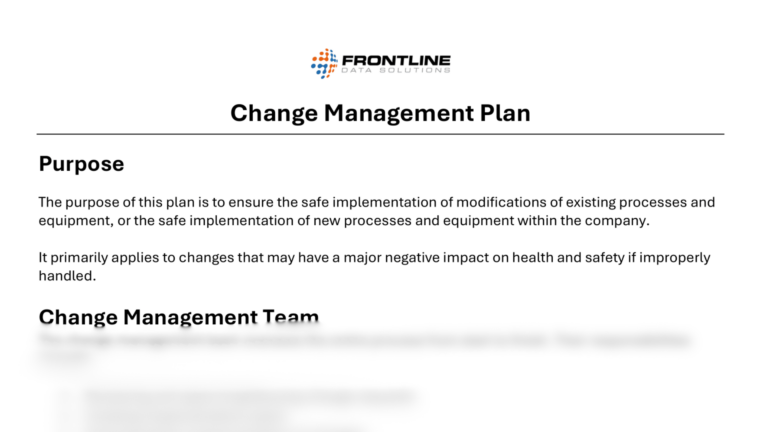Change management best practices mostly involve making the process more efficient and accurate. Because there are so many ways for details to fall through the cracks, it’s important to anticipate and eliminate issues before you start implementing a change.
There are many different approaches to managing changes. But regardless of how you do it, you can adopt these practices to improve your change management process.
Free template!
Download this free template to create a site-specific change management plan that incorporates best practices for efficiency.
Clearly define roles and responsibilities
Projects are more likely to fail when they’re not properly delegated. A change management best practice is to clearly define roles within the team before starting work on any project.
Here are some questions you should answer:
- Whose job is it to approve or deny change requests?
- Once approved, who comes up with the implementation plan?
- Who’s in charge of delegating action items?
- Who is responsible for documenting changes?
Answering these questions ahead of time will allow your team to operate more efficiently by adhering to management best practices.
Have a flexible approach
One of the biggest mistakes you can make is not adapting your plan during the implementation process. As you work on completing action items, you’ll likely come across issues that require further action. It’d be completely unrealistic to assume that implementation is going to go exactly according to your plan.
The key is to only adjust the implementation stage of change management. I don’t recommend altering your request and approval systems midway through a project. And that’s because it can disrupt the flow of ongoing changes and affect the outcome.
When implementing changes, remember to keep your approach flexible. Adapting without changing the original verification stages is a best practice in change management.
Implement a formal request process
Every change management system needs a formal request process. Without one, it’s difficult to keep track of what’s happening around the company.
I’d recommend a digital request system if possible. That way you can automatically move projects to the next step if they’re approved or close them if they’re denied. And you can easily keep a record of all the change requests you’ve received, who submitted them, and their outcomes, adhering to change management best practices.
Use change management software
Change management software, like Frontline MOC, is a game-changer when it comes to implementing safe and effective changes. It provides a standard workflow for your team to follow which reduces the likelihood of them making mistakes or costly oversights.
In Frontline MOC, the workflow includes four mandatory steps and three optional steps (*). They include:
- Pre-approval*
- New MOC
- Evaluation*
- Collaboration*
- Approval
- Implementation
- Startup
This ensures that your team is consistent in how it approves and manages projects. Replacing your manual process with software can also improve the efficiency of your change management team. Because it takes care of the documentation aspect of project completion, your team can focus on the actual implementation tasks. This means that changes happen quickly and with fewer errors.
Of all the change management best practices listed here, adopting software is the most effective. It alleviates many of the administrative headaches of tracking changes and can greatly reduce the time investment needed to oversee projects.
If you’re interested in learning more about Frontline MOC, check out the webinar below or schedule a demo with our sales team.
Webinar on change management
In this webinar, we discuss the benefits of using Frontline MOC for implementing change management best practices in organizational changes.






